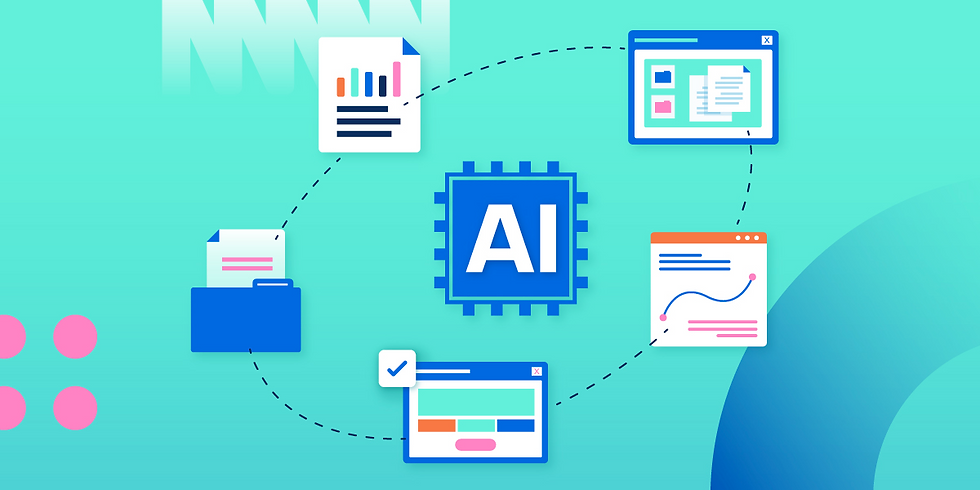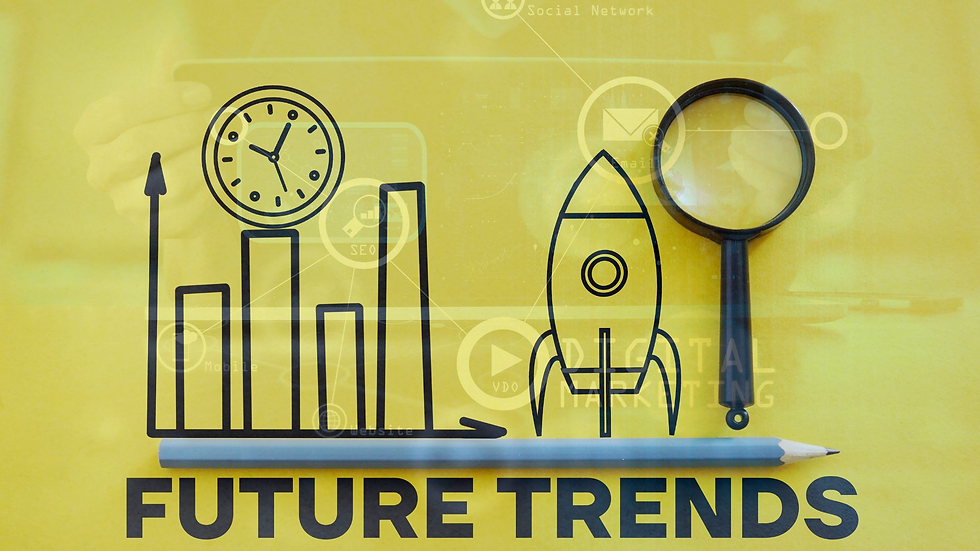AI Note Templates Explored: Comprehensive Guide to Intelligent Documentation Frameworks
- Aisha Washington

- Aug 2
- 7 min read
Updated: Aug 4

In today’s fast-paced digital landscape, AI note templates and intelligent documentation frameworks are transforming how individuals and organizations capture, organize, and utilize information. From automating tedious note-taking tasks to enhancing collaborative workflows, these AI-enhanced tools are revolutionizing productivity and knowledge management. This comprehensive guide explores the technology behind AI note templates, their core components, real-world applications, and future trends, providing practical insights for professionals seeking to leverage intelligent documentation for strategic advantage.
1. Introduction
Efficient documentation is the backbone of effective communication and decision-making across industries. Traditional note-taking methods often lead to fragmented, inconsistent records that hamper knowledge sharing and slow down workflows. AI note templates—pre-structured, dynamic note formats powered by artificial intelligence—address these challenges by automating content generation, contextual suggestions, and organizational consistency.
Intelligent documentation frameworks integrate AI models with user-friendly interfaces and data processing layers to create adaptable systems that evolve with users' needs. These innovations not only save time but also improve data quality and enable deeper insights from captured information.
This guide will:
Define AI note templates and their evolution
Dissect the architecture of intelligent documentation frameworks
Highlight key features and tangible benefits
Explore industry-specific use cases
Analyze emerging trends and challenges
To maintain a rigorous perspective, this article references expert sources such as MIT Technology Review on AI trends and adheres to compliance standards like HIPAA and GDPR where applicable.
2. What Are AI Note Templates?

2.1. Definition & Purpose
AI note templates are dynamic, AI-powered document structures designed to automate the creation, organization, and enhancement of notes. Unlike static templates with fixed fields, these intelligent formats leverage machine learning to suggest relevant content, auto-fill sections based on context, and adapt to user behavior, streamlining the documentation process.
For example, in a sales call note template, an AI might automatically extract customer pain points from a transcript and suggest action items such as follow-up emails or product demos. The purpose is to reduce manual effort while increasing accuracy and relevance.
2.2. Evolution from Static to Dynamic Templates
Traditional note templates are static forms: fixed fields and sections requiring manual entry. While useful for standardization, they lack flexibility and intelligence.
The rise of AI technologies—particularly natural language processing (NLP) and machine learning (ML)—has enabled the evolution toward dynamic templates that:
Automatically structure free text into organized notes
Provide context-aware content recommendations
Adapt templates based on user role, industry, or prior inputs
This shift marks a fundamental transformation from passive forms to interactive, responsive documentation frameworks.
2.3. Core AI Technologies Behind the Scenes
Several AI technologies power modern note templates:
Natural Language Processing (NLP): Enables understanding, summarization, and generation of human language.
Machine Learning (ML): Learns patterns from data to improve suggestions and automate classification.
Knowledge Graphs: Represent semantic relationships between entities to enhance contextual linking.
Data Pipelines: Ingest and preprocess raw textual data ensuring clean input for model inference.
Large Language Models (LLMs): Such as GPT-4 provide sophisticated language understanding for summarization and content generation.
Together, these components allow AI note templates to move beyond static forms to intelligent frameworks that empower users with meaningful automation.
3. Anatomy of Intelligent Documentation Frameworks

Intelligent documentation frameworks consist of multiple integrated layers working in concert to deliver seamless user experiences enriched by AI insights.
3.1. AI Models & Algorithms
At the core are several AI models tailored for distinct functions:
Model Type | Purpose | Example Use Case |
|---|---|---|
Summarization Engines | Condense lengthy text into concise summaries | Meeting minute generation |
Entity Recognition Models | Detect key entities like names, dates, locations | Auto-tagging in legal briefs |
Large Language Models (LLMs) | Generate human-like text and contextual suggestions | Drafting email follow-ups or reports |
These models work together to analyze input data, identify salient information, and generate structured output aligned with template requirements.
3.2. Data Processing & Knowledge Graphs
Automated tagging and semantic linking are vital for organizing notes:
Automated Tagging: Uses NLP to assign keywords or categories to notes.
Semantic Linking: Connects related notes or concepts through underlying meaning rather than keyword matching.
Graph Databases: Store interconnected data points enabling rapid retrieval and visualization of relationships.
This architecture allows users to seamlessly navigate complex information spaces without manual indexing.
3.3. User Interface & Experience Layer
User-centric design enhances adoption:
Interactive Fields: Dynamic input areas that adjust based on prior entries.
Adaptive Sections: Template parts that expand or collapse depending on context.
Real-Time Collaboration: Multiple users can edit simultaneously with live updates.
A well-designed UI minimizes friction and leverages AI capabilities transparently to support users’ workflows.
3.4. API & Integration Layer
Seamless integration with external systems is essential for enterprise use:
Connectors link note templates with tools like:
Customer Relationship Management (CRM) systems
Electronic Health Records (EHR)
Project management platforms (e.g., Jira, Trello)
These integrations facilitate automated data flows, eliminating duplicate entry and synchronizing information across organizational silos.
According to Gartner’s report on API management, smooth integration is key to scalable digital transformation (Gartner API Management).
4. Key Features & Benefits
AI note templates come with several standout features driving improved documentation quality and operational efficiency.
4.1. Automated Summarization & Key Takeaways
AI models extract highlights from lengthy transcripts or documents—such as meetings or interviews—automatically generating concise summaries that save users hours of manual review.
For example, a research team can upload interview recordings and instantly receive bullet-point summaries emphasizing critical insights.
4.2. Contextual Content Suggestions
Templates provide real-time recommendations tailored to user roles and contexts:
Suggesting relevant links or reference materials
Recommending next steps or action items
Proposing additional fields based on document type and user behavior
This personalization improves relevance and reduces cognitive load during note-taking.
4.3. Dynamic Action-Item Generation
Unstructured notes often contain implicit tasks; AI extracts these as actionable items such as:
To-do lists
Support tickets
Calendar invites
For example:
Input: "We need to follow up on budget approval next Friday."
Output: Create calendar event "Budget Approval Follow-up" scheduled for next Friday.
This automation ensures nothing falls through the cracks.
4.4. Data Quality & Consistency
Standardized fields restricted by AI validation reduce errors and enforce compliance standards:
Error reduction through input validation
Audit trails documenting changes for accountability
Consistent formatting across documents facilitating easier downstream processing
These features enhance trustworthiness of stored information.
5. Real-World Use Cases & Case Studies

The impact of AI note templates spans multiple sectors where precise documentation matters.
5.1. Healthcare: Ambient Clinical Intelligence
Physicians spend significant time documenting patient visits. AI-powered ambient clinical intelligence tools automatically transcribe doctor-patient dialogues into structured SOAP notes (Subjective, Objective, Assessment, Plan), reducing clinician burnout while improving record accuracy.
A study by Mayo Clinic showed that ambient intelligence reduced documentation time by up to 50%, enabling doctors to focus more on patient care than paperwork.
5.2. Legal: Automated Briefs & Discovery Requests
In legal practice, AI analyzes depositions, case law, and contracts to populate complex legal templates efficiently:
Extracting relevant precedents
Auto-filling discovery request forms
Summarizing case deposits for quick review
This accelerates case preparation while minimizing human error.
5.3. Sales: CRM Update & Call Insights
Sales teams benefit from AI transcription of calls that extract customer needs and sentiment analysis:
Real-time CRM updates without manual entry
Actionable insights highlighting pain points or objections
Suggested follow-up steps personalized per client history
This leads to improved pipeline management and higher close rates.
5.4. Project Management: From Meetings to Tickets
Meeting notes are automatically summarized into key decisions and action items converted into project management tickets such as Jira or Trello cards:
Ensures accountability by assigning tasks directly from discussions
Enhances transparency with shared real-time updates
Reduces time lag between meeting outcomes and execution
6. Industry Trends & Future Directions

The landscape of AI note templates is evolving rapidly with several key trends shaping its future.
6.1. LLM-Powered Real-Time Summarization
Advanced large language models like GPT-4 and Claude enable:
More accurate summaries capturing nuanced context
Real-time note generation during conversations or presentations
Multilingual support expanding global usability
These capabilities enhance immediacy and precision in documentation workflows.
6.2. Hyper-Personalization & Role-Based Templates
AI adapts templates dynamically based on user behavior, preferences, and roles:
Sales reps get customer-focused layouts
Legal professionals receive case-oriented structures
Healthcare providers see patient-centric views
Such personalization improves relevance and user satisfaction.
6.3. Automated Knowledge Graph Building
Semantic search technologies automatically construct knowledge graphs from tagged keywords allowing:
Intelligent retrieval of related documents or notes
Visualization of concept relationships for deeper insight
Enhanced discovery within large data repositories
This trend supports smarter organizational knowledge management.
6.4. Ethics & Human-in-the-Loop
Balancing automation with human oversight remains critical:
Human-in-the-loop systems ensure ethical use by reviewing flagged outputs
Transparency mechanisms explain AI decisions
Bias mitigation strategies embedded in models promote fairness
Ethical frameworks safeguard against overreliance on automated decisions.
7. Challenges & Solutions

Despite their promise, deploying AI note templates presents challenges requiring thoughtful solutions.
7.1. Data Privacy & Security
Handling sensitive data demands compliance with regulations like HIPAA (healthcare) and GDPR (EU privacy):
Employ end-to-end encryption in transit and at rest
Conduct rigorous vendor risk assessments focusing on security certifications (e.g., SOC 2)
Implement role-based access controls restricting sensitive data exposure
Security-first design builds trust essential for adoption.
7.2. Accuracy & Trust in AI Outputs
AI-generated notes may contain errors or misinterpretations:
Incorporate human review workflows with suggested edits highlighted
Use confidence scoring mechanisms indicating reliability of outputs
Continuously retrain models with domain-specific datasets to improve precision
These steps increase user trust in automated documentation.
7.3. Integration Complexity
Connecting AI templates with diverse enterprise systems involves:
Navigating API incompatibilities or version mismatches
Utilizing middleware platforms enabling standardized data exchange
Planning phased rollouts minimizing disruption
Robust integration architecture is essential for seamless adoption.
7.4. User Adoption & Customization
Resistance may arise if tools feel rigid or difficult:
Provide flexible template customization options aligned with user workflows
Offer comprehensive training programs emphasizing benefits and usage tips
Gather continuous feedback driving iterative improvements
Empowering users fosters long-term engagement.
FAQ: Practical Insights on AI Note Templates
Q1: How do AI note templates improve productivity? AI note templates automate routine tasks such as summarization, tagging, and action-item extraction—significantly reducing manual effort while enhancing accuracy, which accelerates workflows across teams.
Q2: Are AI-generated notes secure? When implemented following best practices—encryption, compliance with HIPAA/GDPR, secure vendor partnerships—AI-generated notes maintain high security standards protecting sensitive data.
Q3: Can I customize AI note templates for my industry? Yes, most intelligent documentation frameworks allow flexible customization tailored to specific industries or roles for maximum relevance.
Q4: What is the role of human oversight in AI notes? Human-in-the-loop processes ensure final validation of AI outputs preventing errors and addressing ethical concerns while maintaining speed advantages offered by automation.
Q5: How do AI note templates integrate with existing software? They typically connect via APIs or middleware platforms enabling synchronization with CRMs, EHRs, project management tools ensuring consistent data flow across systems.
Harnessing the power of AI note templates within intelligent documentation frameworks enables organizations to streamline information capture, enhance collaboration, and unlock new levels of productivity. By understanding their technological foundations, key benefits, real-world applications, and future trends—as outlined in this guide—professionals can confidently adopt these transformative solutions tailored to their unique knowledge management needs.


